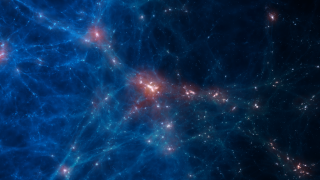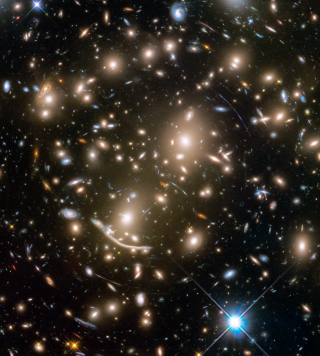Bibcode
Sánchez-Menguiano, L.; Pérez, I.; Zurita, A.; Martínez-Valpuesta, I.; Aguerri, J. A. L.; Sánchez, S. F.; Comerón, S.; Díaz-García, S.
Referencia bibliográfica
Monthly Notices of the Royal Astronomical Society, Volume 450, Issue 3, p.2670-2676
Fecha de publicación:
7
2015
Número de citas
12
Número de citas referidas
11
Descripción
The aim of our study is to use dynamical simulations to explore the
influence of two important dynamical bar parameters, bar strength and
bar pattern speed on the shape of the bar dust lanes. To quantify the
shape of the dust lanes we have developed a new systematic method to
measure the dust lane curvature. Previous numerical simulations have
compared the curvature of bar dust lanes with the bar strength,
predicting a relation between both parameters which has been supported
by observational studies but with a large spread. We take into account
the bar pattern speed to explore, simultaneously, the effect of both
parameters on the dust lane shape. To that end, we separate our galactic
bars in fast bars (1 < {R} < 1.4 ) and slow bars ({R} > 1.4 ),
obtaining, as previous simulations, an inverse relation between the dust
lane curvature and the bar strength for fast bars. For the first time,
we extend the study to slow bars, finding a constant curvature as a
function of the bar strength. As a result, we conclude that weak bars
with straight dust lanes are candidates for slow bars. Finally, we have
analysed a pilot sample of 10 S4G galaxies, obtaining dust
lane curvatures lying within the range covered by the simulations.
Proyectos relacionados

Astrofísica Numérica: Formación y Evolución de Galaxias
Entre las cuestiones fundamentales en Astronomía y Astrofísica están la formación y evolución de galaxias. Las escalas de tiempo y tamaño son tan astronómicas que su observación en galaxias individuales es imposible. Solo con el uso de simulaciones numéricas es posible entender la formación de estructuras cósmicas dentro del actual marco
Claudio
Dalla Vecchia

Evolución de Galaxias en Cúmulos
Las estructuras en el Universo, a todas las escalas de masa, se han formado de una forma jerárquica y principalmente producidas por fusiones de galaxias. Sin embargo, esta formación jerárquica de las galaxias está modulada por el entorno en el cual se crean y evolucionan. Mientras que las galaxias de campo presentan una evolución pasiva, los
Jairo
Méndez Abreu